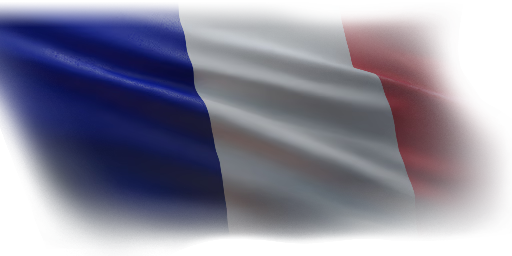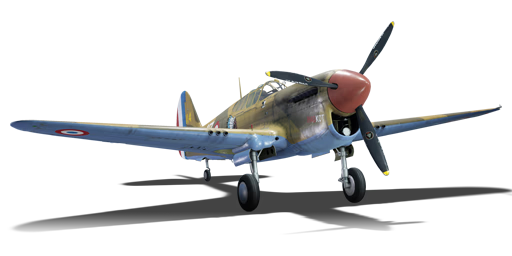



The P-40F differed from earlier P-40 variants by having the Merlin engine. The Allison V-1710 engine made around 1,150 hp but the Merlin engine produced 1,300 hp; a 12% increase. One way to tell a P-40F from earlier variants was the lack of an air scoop on top of the engine. To increase stability, the fuselage was lengthened. The P-40F also brought with it the nickname "Warhawk". A significant portion of all P-40Fs built were sent to the Royal Air Force under the Lend-Lease program. However, many of the P-40Fs sent to the RAF were either returned to the US or lost in shipping. Some P-40Fs were sent to the "Free French" Air Force and saw use in North Africa. The French P-40F was named "Lafayette", which was based on the French squadron (GC 2/4 La Fayette) who used them.
The P-40F-5 Lafayette (France) was introduced as a premium fighter in Update Update "Raining Fire". Although it features the Packard-Merlin engine, the P-40F is still best suited to low-altitude fighting. Its high speed handling is quite poor and makes it difficult to get guns on target. However, it does have a relatively high structural limit of 819 km/h (509 mph), so players can quickly dive away if needed. The Lafayette comes armed with six 12.7 mm machine guns, a big improvement over earlier P-40 variants. On the other hand, the P-40F was still quite early in the war and doesn't have access to late-war 12.7 mm machine gun belts. Nonetheless, the P-40F Lafayette is a good low-altitude fighter thanks to its weaponry and flight performance.
flaps
flaps
flaps
brake
| Belt | Belt filling | Armor penetration (mm) at a distance: | |||||
|---|---|---|---|---|---|---|---|
| 10 m | 100 m | 500 m | 1000 m | 1500 m | 2000 m | ||
| T/Ball/I/AP | 30 | 27 | 20 | 13 | 9 | 6 | |
| AP/AP/AP/T/I | 30 | 27 | 20 | 13 | 9 | 6 | |
| T/AP/AP/AP | 30 | 27 | 20 | 13 | 9 | 6 | |
| T/T/T/AP | 30 | 27 | 20 | 13 | 9 | 6 | |
| AP/I/AP | 30 | 27 | 20 | 13 | 9 | 6 | |
2 × 100 lb AN-M30A1 bomb







 2 x (40 / 75 / 155) %
2 x (40 / 75 / 155) % 
 2 x 118 %
2 x 118 % 

Flight performance | |
|---|---|
Survivability |
|---|
Weaponry | |
|---|---|